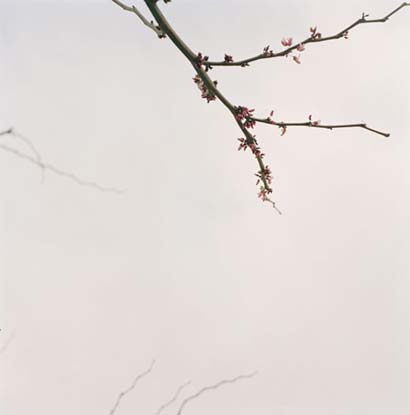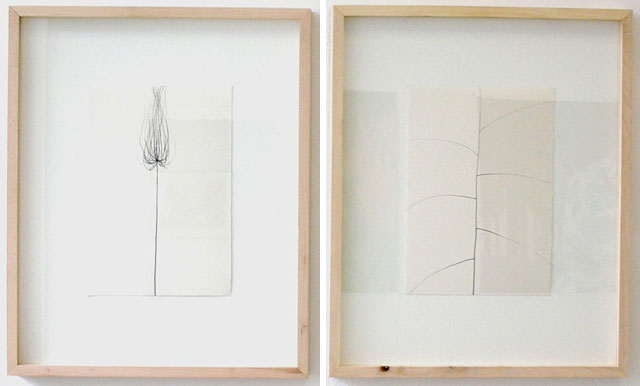
“Leaves have evolved over millions of years to optimize light collection, transport of nutrients to and from the plant body, and mechanical stability against natural stresses,” says David Young a physicist at the Lawrence Livermore National Laboratories near San Francisco.
The puzzle is how leaves grow into such a wide variety of similar shapes. What process can control this growth? Clearly, there is a genetic component to leaf growth but that cannot be the whole story because leaves on the same plant sometimes grow into different shapes, a phenomenon known as heteroblasty. That’s because environmental factors such as nutrition, sunlight also influence growth and shape.
Various theories attempt to explain leaf shape using ideas such as fractals and the Turing reaction-diffusion process. But none provide a convincing explanation for the variety of leaf shapes that occur in nature.
Today, Young attempts to change that by putting forward a simple model of leaf growth that reproduces much of the spectrum of leaf shapes that appear in nature. (…) In his model, the growth of leaf lobes is governed by the position of leaf veins. The leaf then simply grows in 2 dimensions in a way that is governed by a simple algorithm. It is this growth pattern that determines the ultimate shape of the leaf. In Young’s model, the final leaf shape is really an accidental by product of this growth process.
{ The Physics arXiv Blog | Continue reading }
photo { Ye Rin Mok }
Botany, science | April 29th, 2010 10:30 am

I stopped eating pork about eight years ago, after a scientist happened to mention that the animal whose teeth most closely resemble our own is the pig. Unable to shake the image of a perky little pig flashing me a brilliant George Clooney smile, I decided it was easier to forgo the Christmas ham. A couple of years later, I gave up on all mammalian meat, period. I still eat fish and poultry, however and pour eggnog in my coffee. My dietary decisions are arbitrary and inconsistent, and when friends ask why I’m willing to try the duck but not the lamb, I don’t have a good answer. Food choices are often like that: difficult to articulate yet strongly held. (…)
But before we cede the entire moral penthouse to “committed vegetarians” and “strong ethical vegans,” we might consider that plants no more aspire to being stir-fried in a wok than a hog aspires to being peppercorn-studded in my Christmas clay pot.
Plants are lively and seek to keep it that way. The more that scientists learn about the complexity of plants — their keen sensitivity to the environment, the speed with which they react to changes in the environment, and the extraordinary number of tricks that plants will rally to fight off attackers and solicit help from afar — the more impressed researchers become, and the less easily we can dismiss plants as so much fiberfill backdrop, passive sunlight collectors on which deer, antelope and vegans can conveniently graze. (…)
Just because we humans can’t hear them doesn’t mean plants don’t howl. Some of the compounds that plants generate in response to insect mastication — their feedback, you might say — are volatile chemicals that serve as cries for help. Such airborne alarm calls have been shown to attract both large predatory insects like dragon flies, which delight in caterpillar meat, and tiny parasitic insects, which can infect a caterpillar and destroy it from within.
{ Natalie Angier/NY Times | Continue reading }
illustration { Kirsty Whiten }
Botany, food, drinks, restaurants | January 21st, 2010 8:16 pm

People have been bringing plants into residential and other indoor settings for centuries, but little is known about their psychological effects. In the present article, we critically review the experimental literature on the psychological benefits of indoor plants.
We focus on benefits gained through passive interactions with indoor plants rather than on the effects of guided interactions with plants in horticultural therapy or the indirect effect of indoor plants as air purifiers or humidifiers. The reviewed experiments addressed a variety of outcomes, including emotional states, pain perception, creativity, task-performance, and indices of autonomic arousal. Some findings recur, such as enhanced pain management with plants present, but in general the results appear to be quite mixed. Sources of this heterogeneity include diversity in experimental manipulations, settings, samples, exposure durations, and measures. After addressing some overarching theoretical issues, we close with recommendations for further research with regard to experimental design, measurement, analysis, and reporting.
{ The psychological benefits of indoor plants: A critical review of the experimental literature | ScienceDirect }
Botany, science | December 16th, 2009 12:40 pm

Orchidaceae, the Orchid family, is the largest family of the flowering plants.
The Royal Botanical Gardens of Kew list 880 genera and nearly 22,000 accepted species, but the exact number is unknown (perhaps as many as 25,000) because of taxonomic disputes.
The number of orchid species equals about four times the number of mammal species, or more than twice the number of bird species. It also encompasses about 6–11% of all seed plants.
About 800 new orchid species are added each year.
{ Wikipedia | Continue reading }
Most of us have genes that make us as hardy as dandelions: able to take root and survive almost anywhere. A few of us, however, are more like the orchid: fragile and fickle, but capable of blooming spectacularly if given greenhouse care. So holds a provocative new theory of genetics, which asserts that the very genes that give us the most trouble as a species, causing behaviors that are self-destructive and antisocial, also underlie humankind’s phenomenal adaptability and evolutionary success. With a bad environment and poor parenting, orchid children can end up depressed, drug-addicted, or in jail—but with the right environment and good parenting, they can grow up to be society’s most creative, successful, and happy people.
{ The Atlantic | Continue reading }
related { Japanese researchers extract vanilla from cow dung. }
illustration { Octavio Ocampo }
Botany, food, drinks, restaurants, ideas | November 13th, 2009 9:42 am






